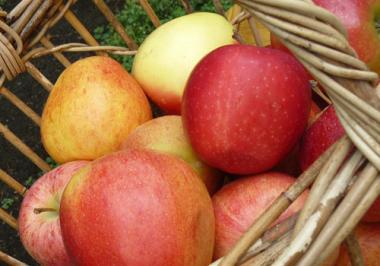Policies that support CSA are primarily those that support small farmers, provide access to land, and promote healthy food.

Land
At the local level, land trusts of various kinds and the conservation easements can help farmers and CSA groups acquire land and protect it from development. At the federal level, the innovative Conservation Security Program pays farmers who are already doing a good job of protecting resources on their working lands, rewarding those who are farming in a way that benefits soil, water, and air resources. The program is currently only available in certain watersheds in the US, but is extraordinarily popular with farmers. Expanding its mandate and funding would encourage more farmers to practice sustainable agriculture on more land.
For more on land issues see theg topic of the Food Security Learning Center; Equity Trust, Inc.; and the E.F. Schumacher Society. For more policies to support small farmers, see the National Family Farm Coalition.
Food Access
Federal food assistance programs can improve food access through promotion of fresh produce through CSA as well as at farmers’ markets. The Senior Farmers Market Nutrition Program and the WIC Farmers Market Nutrition Program can be used to pay for CSA in a couple of states; expanding these programs would benefit many more seniors, new mothers, and farmers. For more information on expanding the Farmers’ Market Nutrition Programs for CSA, contact the Hartford Food System. CSA programs able to accept SNAP benefits (formerly “food stamps”) are able to better reach low income individuals and families who often do not have reliable access to fresh, nutritious food. Just Food’s CSA in NYC program is a pioneer in developing SNAP-friendly CSA. Nutrition education components associated with FMNP and SNAP are also an important aspect of CSA support and extension — cooking and nutrition classes can be critical to people’s acceptance of unfamiliar foods they may find in their CSA share.
On a local level in urban areas, land use policies can promote CSA by making public spaces available for pick-up and gathering sites for CSA members.
USDA also has some existing resources for CSA farmers and members. The National Sustainable Agriculture Information Service and the Alternative Farming Systems Information Center provide information on CSA farming, and the Community Food Project Competitive Grants Program can fund CSA programs as part of larger community food security projects.
Broader policy at all governmental levels to increase access to land and healthy food is needed to support local, family-scale agriculture and healthy communities. The Food and Farms Policy Partnership Healthy Food and Communities work group developed the following recommendations for the 2007 Farm Bill that would promote community supported agriculture:
— Protect and increase funding for the Expanded Food Nutrition Education Program and its current practice of employing local paraprofessionals.
— Expand USDA lending programs such as Farm Service Agency direct and guaranteed loans for new markets for beginning and limited resource farmers.
— Increase funding for promotion for access to farmers’ markets and locally- or regionally- grown foods to encourage participation for limited resource and socially disadvantaged farmers.
— Solicit research that meets the needs of small- and mid-scale, regionally-based food producers, distributors, and marketers through existing research programs such as Sustainable Agriculture Research and Education, National Research Initiative, and the Initiative for Future Agriculture and Food Systems.
For more on the U.S. Farm Bill, see Community Food Security Coalition Federal Policy page.
Advocacy
Advocacy by individuals, communities, religious congregations, and food and farming networks is essential to creation of CSA-friendly policy at all levels. CSA communities can encourage advocacy by creating a space for people to converse about and grasp legislation — to develop “community supported advocacy,” in the words of Angelic Organics Learning Center Director Tom Spaulding.
The CSALC creates this kind of space and for dialogue and education, as do Food System Summits such as those that have been held in New York City or Rockford, Illinois. Other programs that create this kind of space are advocacy, training, and capacity-building programs, such as the Collaborative Regional Alliance for Farmer Training (CRAFT) program, which connects experienced farmer mentors with prospective farmers and has expanded from the Northeast to the Midwest and around the country. Another example is Californias Farmlink, which connects people who own unused agricultural land with farmers looking for land to farm.
Congregation supported agriculture — through religious communities — can be an effective advocate for participation of low-income individuals and families in CSA. Local churches can help to subsidize the cost of shares as in the Madison Area CSA Coalition (MACSAC), which supports 30-40 families per season. Other congregational advocates for CSA include the Hunger Program and Food and Faith Initiative of the Presbyterian Church, and the Congregational Churchs Center for Land and People in Iowa. Catholic religious communities, such as at Genesis Farm, have dedicated land for growing food and educational work — creating another kind of space for dialogue, education, and preservation.
Individuals and communities involved in CSA are part of the wider community concerned with taste, anti-hunger, health, nutrition, access, and many other food-related issues — and as such can have a strong voice as advocates. Effective advocacy for CSA will lead to effective policies for land and people, helping another generation of farmers to emerge, securing access to land, building partnerships with policy organizations, and creating equity for farmers and all consumers.
Updated 9/2011



Comments are closed.